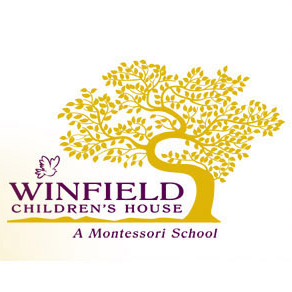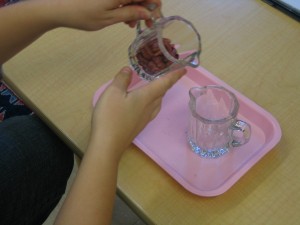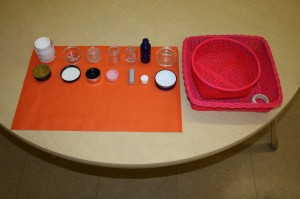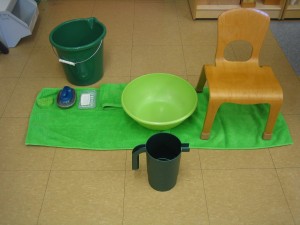Practical Life and the Child
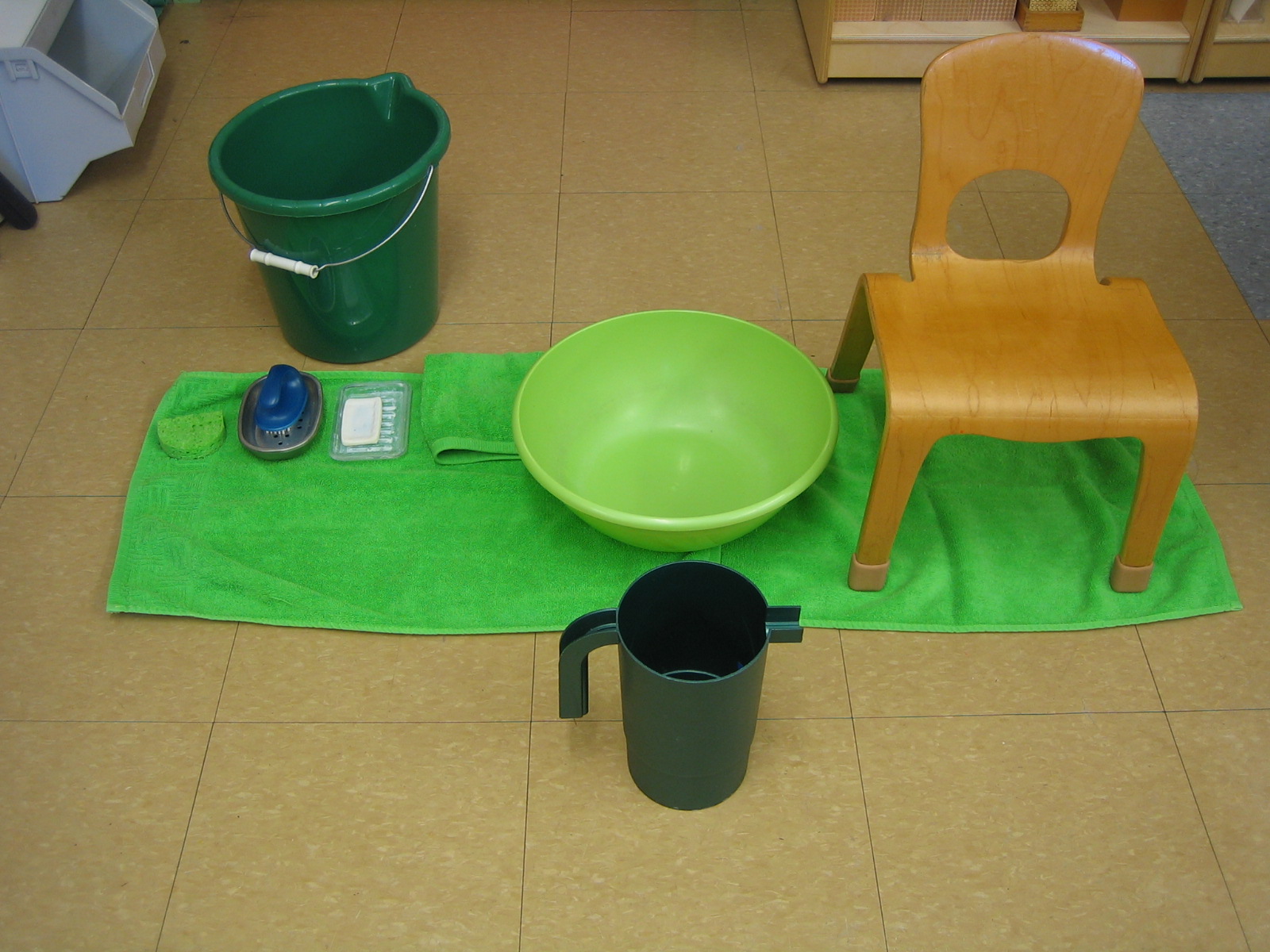
When learning about the Montessori classroom, parents often wonder about the purpose of the materials in the Practical Life area of the classroom. It is evident while observing that children are drawn to this area of the classroom and revisit the appealing materials frequently. Why is this so? And what is the value of these activities for the child’s development?
Let’s examine some of the skills acquired while working with the Practical Life materials: Concentration, Coordination, Independence and Order.
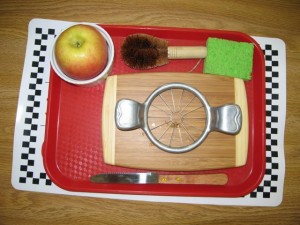 Concentration: (the direction of all thought or effort toward one particular task, idea, or subject)
Concentration: (the direction of all thought or effort toward one particular task, idea, or subject)
When young children first enter the Montessori classroom, they tend to move about the environment exploring a material for a very brief moment before moving on to the next. The Montessori Practical Life materials are designed to capture the child’s attention with their attractive appearance and authenticity. They are designed to be open-ended and used in a variety of ways. As the children become engrossed in their work choice, the amount of time spent with each activity is extended. The children’s ability to concentrate grows as the length of time they are engaged with the activity grows. The children will use their ability to concentrate to complete some of the more complex tasks they encounter when they are solving math problems and learning to read and write.
Coordination: (the skillful and balanced movement of different parts, especially parts of the body, at the same time)
The works included in the Practical Life area of the classroom include scooping, tonging, pouring, sewing, taking care of the environment, and taking care of oneself. Through the use of carefully sequenced activities, the children develop gross and fine motor control and eye/hand coordination. As the child scrubs a table, for example, they organize their work space when they set up for the work, follow a complex sequence of steps from scrubbing to rinsing and then drying the table, and use the movements (top to bottom, left to right and counterclockwise strokes) with the scrub brush, sponge and towel that they will use with a pencil when writing.
Independence: (freedom from dependence on or control by another person, organization, or state)
As the children work with the Practical Life materials they practice making individual work choices. They are able to progress through each activity on their own as each includes a “control of error” which helps the child to see if s/he has completed the work correctly or needs more practice. The materials are open-ended and can be used in a variety of ways and therefore encourage repetition which leads to mastery. The children also acquire self help skills which free them from requiring assistance to perform basic tasks like washing their hands, preparing a snack, tidying up their work space, or dressing for outdoors.
Order: (an organized condition, with items arranged properly, neatly, or harmoniously)
Every material in a Montessori classroom has a set of steps involved to complete the activity. The children first decide if they will work on a table or a mat depending upon the nature of the activity (Does it include water or writing? How much space is necessary to work comfortably?). The child continues by setting up the activity, completing the work and possibly repeating the activity many times, and then tidying up all the pieces to the tray or basket, and returning it to the appropriate shelf. Their ability to organize their work area as well as follow a multitude of steps, assists the child to complete the more involved and complex works in the Math and Language areas.
Children, who are allowed to freely work in a prepared environment that is designed to meet their needs, blossom. The children gain valuable skills and information that are applied to all their future learning. To the adult it looks like the children are learning how to pour, or sew, or sweep a floor when actually the child is learning invaluable life skills which will assist in all the child’s future educational experiences.
